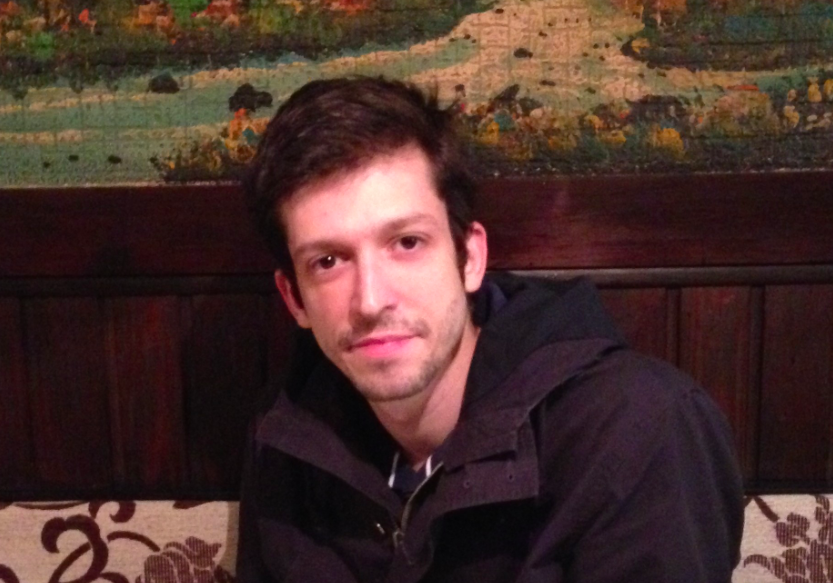Search
To search for an exact match, type the word or phrase you want in quotation marks.
A*DESK has been offering since 2002 contents about criticism and contemporary art. A*DESK has become consolidated thanks to all those who have believed in the project, all those who have followed us, debating, participating and collaborating. Many people have collaborated with A*DESK, and continue to do so. Their efforts, knowledge and belief in the project are what make it grow internationally. At A*DESK we have also generated work for over one hundred professionals in culture, from small collaborations with reviews and classes, to more prolonged and intense collaborations.
At A*DESK we believe in the need for free and universal access to culture and knowledge. We want to carry on being independent, remaining open to more ideas and opinions. If you believe in A*DESK, we need your backing to be able to continue. You can now participate in the project by supporting it. You can choose how much you want to contribute to the project.
You can decide how much you want to bring to the project.

“The expansion and transformation of cultural identity by way of colonialism, the history of Brazil, folklore, traditions of spirituality and gender,” like subjects of a news release; the presence of Latin American baroque as a symptom, the obligatory citation of colonial art and an interview that begins with a reference to passion fruit juice, are just a few indicators that are worth considering in” Historias en los márgenes” (History at the margins), the first retrospective of Adriana Varejão (1962), curated by Adriano Pedrosa, at the Museo de Arte Latinoamericano in Buenos Aires, travelling after its initial presentation last year in the Museo de Arte Moderna in São Paulo. In its extensive presentation, the aforementioned interview and the meticulous texts written for each piece, Pedrosa abounds in academic references to post-colonialism and its derivations or precedents: Eustaquio Soares, Serge Gruzinski, Walter Mignolo and Borges over and over again, the commercial routes of modernity, ecclesiastical art, the theory of miscegenation, the theory of de-westernizing, the theory of the body in resistance to Eurocentrism, etc.
Formally, however, it is hard in this magnificent retrospective to see much beyond a standard exhibition language, regulated by mechanisms that have little to do with the routes of the majolica between China and Latin-America in the colonial era and a lot to do with the de-territorialised art institutions that currently promote and reproduce Latin-American art and its auxiliary discourses.
The work of Varejão, with her career over almost three decades, is in itself an exponent of the way in which these mechanisms have left a mark on the body of her work and that of many of her colleagues. A certain mixture of commercial projection, with a touch of globalization and post-colonialism for the public at large, is evident in paintings like the Pratos (2009-2012) series: circles with fruit and shellfish charged with a certain Japonism and sexuality that, in turn, can include other idiosyncratic figures, for palates accustomed to the anti-Eurocentric discourse.
A strong point of the exhibition is the erudite work on Pedrosa’s part, who plays at commenting on the works in the margins, managing to compete for attention with the anthologised artist. Nevertheless, even though it is proposed as confusing, overgrown and charged with endless references, “Historias en los márgenes” seems more like a French garden, than the splendour of the jungle. A situation that is transitive in a large part of Varejão’s work, where the local references were polished by the heat of an artistic melting pot that in several passages is more reminiscent of Hirst and the Chapman brothers than the flourishing Brazilian scene of the eighties, that she participated in with her paintings, at the time religious and crazed, that slowly gave way to serialised projects, monochromes and (once again) the discourse about the colony.
Pedrosa proposes, insistently, a multicultural and avid Varejão: Portuguese and Chinese, coloniser and Negro, above all Negro, slave and universal. But, the result is nevertheless a very white exhibition, whatever way one looks at it. There is a lingering doubt if some of the theoretical key words, such as miscegenation and the assimilation of the foreigner, definitive in their time, aren’t becoming rather cheap conceptual divides in a market such as that of Latin-American art which, judging from some avatars, seems predisposed to do everything but assimilate itself.

Claudio Iglesias is an art critic based in Buenos Aires. His latest books are Corazón y realidad (Consonni, Bilbao, 2018) and Genios pobres (Mansalva, Buenos Aires, 2018).
"A desk is a dangerous place from which to watch the world" (John Le Carré)